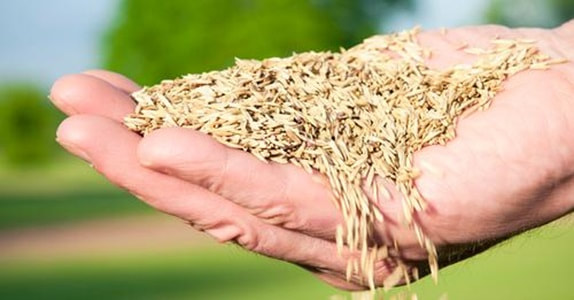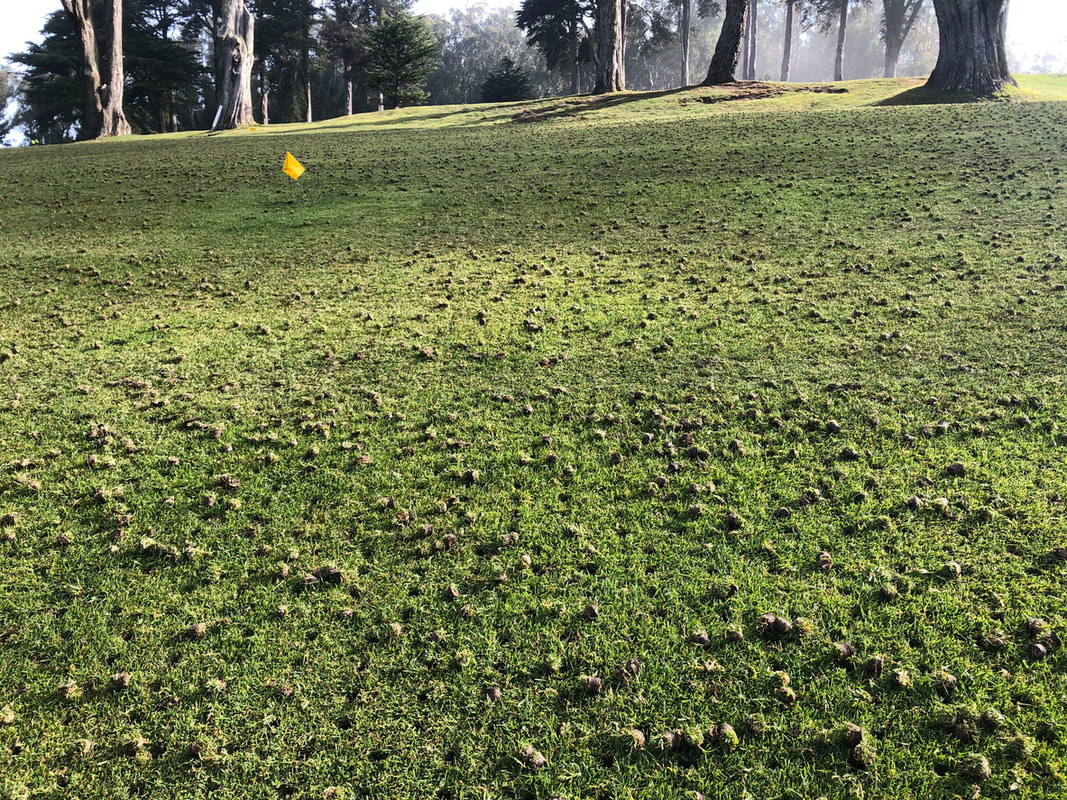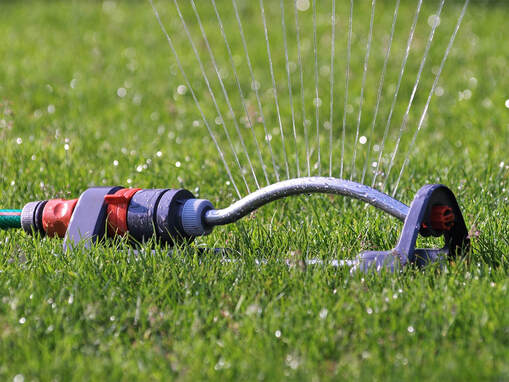 As the back-to-school season approaches, many families are caught up in a whirlwind of activities. From shopping for school supplies to adjusting to new routines, it’s easy for some household tasks to fall by the wayside. One such task is lawn care, which, if neglected, can lead to a less appealing and potentially unhealthy outdoor space. However, with a little planning and the right strategies, you can keep your lawn looking pristine even as your schedule fills up. The Importance of Fall Lawn Care Fall is a critical time for lawn care. The cooler temperatures and increased rainfall provide the ideal conditions for grass to repair and strengthen itself after the hot summer months. Proper lawn care during this season sets the foundation for a healthy, vibrant lawn come spring. 1. Aeration and Overseeding: Over the summer, soil can become compacted, hindering the flow of air, water, and nutrients to the grassroots. Aeration involves creating small holes in the soil to alleviate compaction and allow your lawn to breathe. This is also an excellent time for overseeding, which involves planting new grass seeds to fill in thin or bare spots. 2. Fertilization: Applying a fall fertilizer provides essential nutrients that help your lawn recover from summer stress and prepare for the winter months. A balanced fertilizer with a focus on nitrogen, phosphorus, and potassium will promote root growth and overall health. 3. Leaf Management: Falling leaves can smother your grass if left to accumulate. Regularly raking or mulching leaves not only keeps your lawn looking tidy but also prevents fungal diseases that thrive in damp, covered conditions. 4. Watering: Although the weather is cooler, your lawn still needs consistent watering. Aim for about one inch of water per week, either from rainfall or supplemental irrigation. Watering in the morning helps prevent disease by allowing the grass to dry out during the day. 5. Mowing: Continue to mow your lawn regularly, but gradually lower the mowing height as the season progresses. This helps the grass conserve energy and prepares it for winter dormancy. Be sure to keep your mower blades sharp to ensure a clean cut. Tips for Balancing Lawn Care with a Busy Schedule 1. Create a Lawn Care Calendar: Plan your lawn care tasks around your family’s schedule. Set specific dates for aeration, fertilization, and other important activities to ensure they are not overlooked. 2. Delegate Tasks: Involve the whole family in lawn care. Assign age-appropriate tasks to your children, such as raking leaves or watering plants. This not only lightens your load but also teaches responsibility and the importance of maintaining a healthy outdoor space. 3. Use Time-Saving Tools: Invest in efficient lawn care tools like leaf blowers, mulching mowers, and automatic sprinklers. These tools can significantly reduce the time and effort required to keep your lawn in top shape. 5. Best Priorities: Focus on the most critical tasks that will most impact your lawn’s health. If time is limited, prioritize aeration, fertilization, and leaf removal. Conclusion Balancing lawn care with the demands of the back-to-school season doesn’t have to be overwhelming. By understanding the importance of fall lawn care and implementing these practical tips, you can maintain a beautiful, healthy lawn that you and your family can enjoy year-round. Taking care of your lawn enhances your home’s curb appeal and provides a safe and pleasant environment for outdoor activities. So, as you gear up for the school year, don’t forget to give your lawn the attention it deserves. For professional lawn care services that can help you manage your lawn year-round, contact Kozy Lawn Care. Our team of experts is dedicated to providing top-notch care to keep your lawn looking its best, no matter the season.
0 Comments
 Summer in Omaha, Nebraska, can bring scorching temperatures that stress your lawn. At Kozy Lawn Care, we understand the unique challenges of keeping your grass green and healthy during the hottest months. Here are our top tips to ensure your lawn thrives all summer long. 1. Water Wisely In hot weather, your lawn needs about 1 to 1.5 inches of water per week. Water deeply and infrequently to encourage deep root growth. The best time to water is early in the morning, between 6 a.m. and 10 a.m., to minimize evaporation and fungal growth. 2. Mow High Set your mower blades higher during the summer. Taller grass shades the soil, reducing water evaporation and protecting roots from the sun. Aim to keep your grass around 3 to 4 inches tall. 3. Sharpen Your Mower Blades Dull blades tear grass, making it more susceptible to disease and dehydration. Sharpen your mower blades regularly to ensure a clean cut and a healthier lawn. 4. Fertilize Appropriately Summer is not the best time for heavy fertilization. Excess nitrogen can burn your lawn and promote disease. Instead, use a slow-release fertilizer designed for hot weather, which provides nutrients without overwhelming the grass. 5. Control Weeds and Pests Hot, dry conditions can weaken your lawn, making it more vulnerable to weeds and pests. Regularly inspect your lawn and treat any issues promptly with eco-friendly products to keep your grass healthy and resilient. 6. Aerate for Better Soil Health Compacted soil can restrict water and nutrient absorption. Aerate your lawn in late summer to relieve compaction, improve air circulation, and enhance root growth. 7. Reduce Foot Traffic High temperatures can make your grass more fragile. Minimize foot traffic on your lawn, especially during peak heat, to avoid damaging the grass. 8. Provide Shade If possible, provide temporary shade during the hottest part of the day. Use shade cloths or strategically placed umbrellas to protect vulnerable areas of your lawn. 9. Stay Consistent Regular maintenance is key to a healthy lawn. Stick to a consistent watering, mowing, and inspection schedule to catch and address any issues before they become major problems. At Kozy Lawn Care, we're dedicated to helping you maintain a beautiful lawn all year round. Follow these tips to keep your Omaha lawn lush and vibrant, even during the hottest summer days. For professional assistance, don't hesitate to reach out to our team of lawn care experts!  Crabgrass can be a persistent problem for many lawn owners, turning your lush green space into a patchy, unsightly mess. This stubborn weed not only competes with your grass for nutrients and water but can also spread rapidly if left unchecked. What is Crabgrass? Crabgrass is an annual weed that thrives in warm weather and can quickly overrun your lawn. It has a coarse texture and tends to grow in clumps, making it easily distinguishable from your regular grass. Why is Crabgrass a Problem? 1. Competes for Resources: Crabgrass steals essential nutrients and water from your lawn, weakening the health of your grass. 2. Reduces Aesthetic Appeal: Its unsightly appearance can ruin the uniform look of your lawn. 3. Spreads Quickly: Each plant can produce thousands of seeds, making it difficult to control once it takes root. How to Prevent and Treat Crabgrass 1. Mow at the Right Height: Keeping your grass at the recommended height can create shade, making it harder for crabgrass to grow. 2. Proper Watering: Deep, infrequent watering encourages strong grass roots, which can outcompete crabgrass. 3. Use Pre-emergent Herbicides: Applying these in early spring can prevent crabgrass seeds from germinating. 4. Maintain Healthy Soil: Aeration and proper fertilization can help your grass thrive, leaving less room for weeds. We Can Help You with Your Crabgrass Issues Don't let crabgrass take over your lawn. At Kozy Lawn Care, we have the expertise and tools to effectively manage and prevent crabgrass, ensuring your lawn stays lush and healthy all season long. Reach out to us today, and let’s get your lawn looking its best!  With the arrival of warmer weather, it's the perfect time to rejuvenate our outdoor spaces. Whether you're planning a complete lawn overhaul or just tackling some bare patches, a few well-considered changes can bring about a remarkable transformation. Take the time to understand your turf's unique needs and preferences. Preparation is vital before you start sowing seeds. By ensuring your soil is appropriately conditioned now, you're laying the groundwork for a lush, thriving lawn that will envy the neighborhood all summer. Allocate a weekend to nurture your natural haven; your backyard sanctuary awaits your loving attention! And take the power of watering wisely. Keeping the soil adequately moist is essential for fostering healthy growth. With some care and attention, watch your lawn transform into the verdant retreat you've always envisioned. Remember, Kozy Lawn Care can help get your lawn in tip-top shape and keep it that way. With expert services and personalized care, your outdoor oasis will thrive under their attentive maintenance.  Whether you're an avid gardener or a newcomer looking to transform your landscape, selecting the right grass seed is crucial for a lush lawn all year round! 🌿 From Kentucky Bluegrass to Zoysiagrass, understanding your region's climate, soil type, and the daily wear your lawn endures are key to making the perfect choice. 🌱 Need low-maintenance? Shade-loving? Drought-resistant? We’ve got you covered. Kentucky Bluegrass: Classic Elegance Ideal for: Temperate climates with moderate water availability. Features: Known for its fine texture and rich green color, Kentucky Bluegrass is a popular choice for homeowners seeking a traditional, elegant lawn. Maintenance: Moderate maintenance required, including regular watering and fertilization Zoysiagrass: Tough and Durable Ideal for: Warm-season climates with high foot traffic. Features: Zoysiagrass is prized for its durability and resilience, making it an excellent choice for lawns that endure heavy use. Maintenance:Low maintenance required once established, with good drought tolerance and minimal mowing needs. Fescue: Shade-Tolerant Beauty Ideal for:Shaded areas with limited sunlight. Features:Fescue grass varieties thrive in shady conditions, making them perfect for lawns with trees or buildings blocking the sun. Maintenance:Moderate maintenance required, with regular watering and occasional overseeding in high-traffic areas. Bermuda Grass: Drought-Resistant Champion Ideal for:Hot, arid climates with limited water availability. Features: Bermuda grass is known for its exceptional drought tolerance and rapid growth, making it an ideal choice for areas with hot summers. Maintenance: Low maintenance required once established, with good heat tolerance and minimal watering needs.  Caring for your lawn in the spring in Omaha, Nebraska, involves several essential practices to ensure it remains healthy and vibrant throughout the growing season. Here are some best practices: 1. **Clean Up Debris:** Start by clearing away any accumulated debris over the winter, such as branches, leaves, and other clutter. This allows sunlight and air to reach the grass and prevents mold or disease. 2. **Rake Thoroughly:** Raking your lawn helps to remove dead grass and thatch, which can inhibit new growth. It also helps to loosen the soil and promotes better air circulation. 3. **Aerate the Soil:** If your soil is compacted, aerating it in the spring can improve drainage and allow oxygen, water, and nutrients to reach the grassroots more effectively. This can be done using a mechanical aerator or by manually using aeration shoes or a handheld aerator. 4. **Overseed Bare or Thin Areas:** Spring is a great time to overseed any bare or thin patches in your lawn. Choose a high-quality grass seed suitable for your region and soil type and spread it evenly over the areas in need of repair. Water lightly to help the seeds establish. 5. **Fertilize Appropriately:** Apply a slow-release nitrogen fertilizer in the early spring to promote healthy growth. Be sure to follow the manufacturer's instructions and avoid over-fertilizing, which can lead to excessive growth and increased susceptibility to pests and diseases. 6. **Control Weeds:** Spring is also the time to tackle weeds before they can take over your lawn. Consider using pre-emergent herbicides to prevent weed seeds from germinating, and spot-treat any existing weeds with post-emergent herbicides as needed. 7. **Water Wisely:** Ensure your lawn receives adequate water, especially during dry periods in the spring. Aim for deep, infrequent watering rather than frequent shallow watering to encourage deep root growth. Early morning is the best time to water to minimize evaporation and fungal issues. 8. **Mow Regularly:** As the weather warms up, your grass will start to grow more quickly. Keep it well-maintained by mowing regularly, but avoid cutting off more than one-third of the grass height at a time to prevent stress on the plants. 9. **Monitor for Pests and Diseases:** Look for signs of pests or diseases, such as discolored patches, chewed grass blades, or unusual growth patterns. Early detection can help you address these issues before they become serious problems. 10. **Consider Professional Help:** If you need more clarification about the best practices for lawn care or if you need more time to dedicate to it, consider hiring a professional lawn care service. They can provide expert advice and take care of the necessary tasks to keep your lawn looking its best. You know Kozy Lawn Care is ready to help you with your yard! As winter begins to wane and hints of spring tease the air, February in Nebraska presents an opportunity for proactive yard maintenance and preparation. Despite the chilly temperatures, there are several tasks you can undertake to ensure your yard is ready to burst into vibrant life when the warmer days arrive. Here are some tips on what to do with your yard in February in Nebraska: 1. Plan Your Garden: February is the perfect time to start planning your garden for the upcoming growing season. Research which plants thrive in Nebraska's climate and soil conditions, and sketch out a layout for your garden beds. Consider factors such as sunlight exposure, drainage, and spacing requirements for optimal growth. 2. Start Seeds Indoors: Get a head start on your garden by starting seeds indoors. Many vegetables and flowers can be started indoors in February, giving them a chance to establish strong root systems before transplanting them outdoors in the spring. Invest in some seed trays, potting soil, and grow lights to kick-start your garden. 3. Prune Trees and Shrubs: Take advantage of the dormant season to prune trees and shrubs in your yard. Remove dead or diseased branches, as well as any crossing or rubbing branches that may impede growth. Proper pruning promotes healthy growth and improves the overall appearance of your landscape. 4. Clean Up Debris: Winter storms can leave behind debris such as fallen branches, leaves, and other clutter in your yard. Take some time to clean up any debris to prevent it from smothering emerging plants or becoming a breeding ground for pests and diseases. 5. Test and Amend Soil: Test your soil's pH and nutrient levels to ensure it is in optimal condition for plant growth. Based on the results, amend the soil as needed by adding organic matter, compost, or fertilizers. Proper soil preparation lays the foundation for a successful garden season. 6. Protect Plants from Frost: While the risk of frost persists in February, take precautions to protect tender plants from freezing temperatures. Cover vulnerable plants with frost blankets or row covers, and consider using mulch to insulate the soil and conserve moisture. 7. Plan for Watering: Even though it's still cold outside, it's important to keep an eye on soil moisture levels. Inadequate moisture can stress plants, especially those that are starting to emerge from dormancy. Be prepared to water as needed, taking care to avoid overwatering in soggy soil conditions. 8. Prepare Garden Beds: If weather conditions permit, begin preparing garden beds for planting. Clear away any remaining vegetation from last season, loosen the soil, and add compost or other organic amendments to enrich the soil. Aim for a fine, crumbly texture that is easy for plant roots to penetrate. 9. Monitor for Pests and Diseases: Stay vigilant for signs of pests and diseases in your yard, even during the winter months. Inspect plants regularly for unusual symptoms such as discoloration, wilting, or unusual growth patterns. Early detection allows for prompt intervention to minimize damage. 10. Plan for Spring Landscaping Projects: Use February as a time to brainstorm and plan for any landscaping projects you hope to tackle in the spring. Whether it's installing a new garden bed, building a deck, or redesigning your outdoor living space, early planning ensures a smooth and successful execution. By taking proactive steps to care for your yard in February, you can set the stage for a vibrant and healthy outdoor space come springtime. From planning and preparation to maintenance and protection, there is plenty to do to ensure your yard thrives in the months ahead. Embrace the opportunities that February presents and get ready to enjoy the beauty of your Nebraska landscape throughout the changing seasons. Give Kozy Lawn Care a call, we will be happy to answer quesitons.  The best time to aerate and overseed your lawn is in the fall, this is because lower soil temperatures mixed with aerating your lawn creates the ideal conditions for the grass seed to germinate. We know it is still hot out there, but cooler weather is around the corner. Here are some reasons why you should call Kozy Lawn Care and get on our schedule or aeration this fall.
Taking care of your lawn in Omaha, Nebraska, when it's 99 degrees Fahrenheit requires some special attention to prevent heat stress and damage to the grass. Here are some tips to help you maintain a healthy lawn during hot weather:
Lastly, if the heatwave is extreme and prolonged, and you notice the lawn suffering despite your efforts, it's important to know that some degree of dormancy (browning) in the grass during extremely hot conditions can be normal. The grass should recover once temperatures cool down and regular care practices resume. If you have any questions or concerns, give us a call, Kozy Lawn Care, we are here to help you with all your lawn care needs. Check out our services on our Lawn Services page.  It's important to take the necessary precautions to prevent permanent damage to the turf. Here's a summary of the key points on watering:
|
Kozy Lawn Care has been serving satisfied customers in the Omaha area since 1987. President Joseph Kozol and his professional staff pride themselves in providing you with a more beautiful and healthy lawn. When you choose Kozy Lawn Care, you'll get a "Kozy" feeling know your lawn is in our capable, responsible hands.
• Mowing • Plants and Trees • Sodwork • Mulch • Seeding • Power Raking • Aerating • Snow Removal • Fertilization
•Rocks • Hard Scapes • Boulders • Retaining Walls
• Mowing • Plants and Trees • Sodwork • Mulch • Seeding • Power Raking • Aerating • Snow Removal • Fertilization
•Rocks • Hard Scapes • Boulders • Retaining Walls
SITE LINKS |
CONTACT |
GET A QUOTEClick the link below to schedule an onsite evaluation of your project.
|
Site powered by Cherry Pickers Marketing

 RSS Feed
RSS Feed
